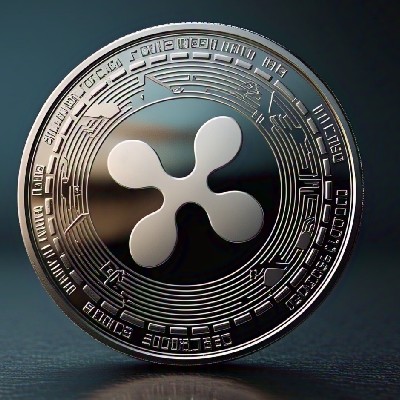


Precio de USDCUSDC
USDC to USD converter
¿Qué opinas hoy de USDC?
Acerca de USDC (USDC)
Qué es USD Coin
USD Coin (USDC) es un tipo de criptomoneda conocida como stablecoin. Las stablecoins son una categoría de activos digitales que mantienen un valor estable en relación con un activo específico o un conjunto de activos. En el caso de USDC, su valor está vinculado 1:1 con el dólar estadounidense. Esto significa que cada token USD Coin corresponde a un dólar estadounidense.
USD Coin fue lanzada en septiembre de 2018 por CENTRE, una colaboración entre las firmas de criptomonedas Circle y Coinbase. El objetivo de USD Coin es tender un puente entre los sistemas financieros tradicionales y las economías digitales, aunando los beneficios de ambos mundos. Al vincular USDC al dólar estadounidense, la stablecoin garantiza la estabilidad del valor, una característica de la que carecen muchas criptomonedas debido a su naturaleza volátil.
En marzo de 2023, tras el reconocimiento por parte de Circle de una importante reserva de efectivo de 3.300 millones de dólares en el Silicon Valley Bank, el valor de su stablecoin USDC experimentó una momentánea depreciación, cayendo a 88 céntimos desde su valoración típica de un dólar. El temor a la depreciación de USDC provocó ventas de pánico, y tanto Binance como Coinbase confirmaron que suspenderían temporalmente la conversión a USDC en ese periodo.
Recursos
Whitepaper: https://f.hubspotusercontent30.net/hubfs/9304636/PDF/centre-whitepaper.pdf
Página web oficial: https://www.centre.io/usdc
¿Cómo funciona USD Coin?
Cada USD coin está supuestamente respaldada por una cantidad equivalente de dólares estadounidenses en reserva. Estas reservas se auditan periódicamente para garantizar la transparencia y la confianza en el sistema. Cuando un usuario compra USD Coins, el valor equivalente en USD se mantiene en una reserva y se emite al usuario una cantidad equivalente de USDC. Del mismo modo, cuando alguien quiere canjear USDC por USD, las monedas se destruyen o "queman", y el equivalente en USD se libera de la reserva.
USD Coin utilizó inicialmente la blockchain de Ethereum, siguiendo el estándar ERC-20, ampliamente aceptado y compatible con muchos monederos y exchanges. Esto facilitó la integración con la infraestructura de activos digitales existente.
Ventajas de USD Coin
La principal ventaja de USD Coin es su estabilidad de precios ya que está vinculado al dólar estadounidense. Esto la convierte en un activo atractivo para quienes desean evitar la volatilidad de precios que suele asociarse a otras criptomonedas. Además, como token digital, USDC puede transferirse globalmente de forma casi instantánea, lo que lo convierte en una herramienta útil para remesas y transacciones globales.
Además, la naturaleza estable de USDC lo convierte en un actor clave en el floreciente ecosistema DeFi (finanzas descentralizadas). Sirve como activo predecible para plataformas de préstamos y empréstitos, así como medio de cambio estable en intercambios descentralizados.
Factores que influyen en el precio y el valor actual de USD Coin
Comprender los factores que influyen en el precio de USD Coin es esencial tanto para los inversores como para los operadores del mercado de criptomonedas. USD Coin (USDC) es una stablecoin, lo que significa que su valor actual está vinculado 1:1 al dólar estadounidense (USD). Este mecanismo de vinculación rige principalmente el valor actual de la moneda estadounidense.
La estabilidad del tipo de cambio USDC a USD
A diferencia de otras criptomonedas que están sujetas a una gran volatilidad, el tipo de cambio USDC a USD se mantiene relativamente estable. Esta estabilidad está garantizada por el emisor, CENTRE -una colaboración entre Circle y Coinbase-, que mantiene una reserva 1:1 en dólares estadounidenses por cada token USDC en circulación. Las auditorías y la supervisión reglamentaria respaldan aún más esta estabilidad, haciendo de USD Coin un activo fiable en el ecosistema de las criptomonedas.
Capitalización bursátil de USD Coin y volumen en 24 horas
Sin embargo, incluso las stablecoins como USD Coin pueden experimentar momentos de depreciación. Por ejemplo, en marzo de 2023, el valor de USD Coin cayó momentáneamente a 88 céntimos debido a que Circle reconoció una reserva de efectivo de 3.300 millones de dólares con Silicon Valley Bank. Estos incidentes pueden incitar a la venta por pánico y provocar suspensiones temporales de la conversión a USDC en plataformas como Binance y Coinbase. Aunque la capitalización de mercado de USD Coin y el volumen de USD Coin en 24 horas pueden seguir siendo sólidos, factores externos como las auditorías de las reservas y el sentimiento del mercado pueden seguir influyendo en la fluctuación del valor de USD Coin.
USD Coin como inversión y su papel en DeFi
Dada su naturaleza estable, muchos consideran que USD Coin es una buena inversión para protegerse de la volatilidad de otras criptomonedas. También se utiliza cada vez más en protocolos financieros descentralizados (DeFi), lo que contribuye a su utilidad y demanda.
Últimas noticias y análisis de precios de USD Coin
Ya sea que esté estudiando el gráfico de USD Coin para el análisis de precios o se mantenga actualizado con las últimas noticias de USD Coin, la comprensión de estos factores puede proporcionar una visión más completa del papel de esta stablecoin en el mercado de activos digitales.
Conclusión
En un mundo en evolución en el que las transacciones digitales se están convirtiendo en la norma, USD Coin tiende un puente entre el mundo de las finanzas tradicionales y la economía digital. Su estabilidad, confianza e interoperabilidad con la economía cripto y las finanzas tradicionales la posicionan como una poderosa herramienta en el panorama financiero. A medida que más empresas y particulares adopten las criptomonedas, las stablecoins como USDC desempeñarán un papel vital en esta nueva economía digital.
Artículos relacionados sobre USD Coin
USDC price today in USD
Historial del precio de USDC (USD)
 Precio más bajo
Precio más bajo Precio más alto
Precio más alto 
¿Cuál es el precio más alto de USDC?
¿Cuál es el precio más bajo de USDC?
Predicción de precios de USDC
¿Cuándo es un buen momento para comprar USDC? ¿Debo comprar o vender USDC ahora?
¿Cuál será el precio de USDC en 2026?
¿Cuál será el precio de USDC en 2031?
Preguntas frecuentes
¿Qué factores pueden afectar la estabilidad del precio de USDC?
¿Es realmente USDC estable en comparación con otras stablecoins?
¿Puedo ganar intereses sobre mis tenencias de USDC?
¿Cómo mantiene USDC su paridad con el dólar estadounidense?
¿Existen riesgos asociados con la tenencia de USDC?
¿Dónde puedo negociar USDC?
¿Cómo puedo convertir USDC de vuelta a USD?
¿USDC tiene tarifas de transacción?
¿Se puede usar USDC en aplicaciones DeFi?
¿Cuál es el impacto de la regulación estadounidense en USDC?
¿Qué es una stablecoin?
¿Qué es USD Coin (USDC)?
¿Cómo se mantiene el valor de USD Coin (USDC) en $1?
¿Puede fluctuar el precio de USD Coin (USDC)?
¿Puedo cambiar directamente USD Coin (USDC) por dólares?
¿Cómo puedo usar USDC?
¿Cuál es el precio actual de USDC?
¿Cuál es el volumen de trading de 24 horas de USDC?
¿Cuál es el máximo histórico de USDC?
¿Puedo comprar USDC en Bitget?
¿Puedo obtener un ingreso estable invirtiendo en USDC?
¿Dónde puedo comprar USDC con la comisión más baja?
Mercado de USDC
Holdings de USDC
Matriz de distribución de holdings de USDC
Holdings por concentración de USDC
USDC direcciones por tiempo en holding
Global USDC prices
- 1
- 2
- 3
- 4
- 5
Cómo comprar USDC(USDC)

Crea tu cuenta gratuita en Bitget

Verifica tu cuenta

Convierte USDC a USDC
Tradea futuros perpetuos de USDC
Después de registrarte en Bitget y comprar tokens de USDT o USDC exitosamente, puedes empezar a hacer trading con derivados, incluidos futuros de USDC y trading con margen para aumentar tus ingresos.
El precio actual de USDC es de $0.9993, con un cambio en el precio en 24 horas del -0.01%. Los traders pueden obtener ganancias yendo en long o en short en futuros de USDC.
Únete al copy trading de USDC siguiendo a traders elite.
Nuevos listados en Bitget
Comprar más
¿Dónde puedo comprar USDC (USDC)?
Sección de video: verificación rápida, trading rápido

USDC to USD converter
Recursos de USDC
Etiquetas:
Clasificación de USDC
Bitget Insights



















































